
Our Location
- Jl. Raya Kuta No.70, Bali
- Jl. Kemang Raya No. 3, Jakarta
- support@domain.com
- (+021) 251 552
- Mon - Sat 09:00 AM - 02:00 PM
Social Media
Dental Implant Bridge
Dental bridges are effective and affordable solutions for replacing one or more consecutively lost teeth. When bridges are fixed on dental implants instead of natural teeth, they are called dental implant bridges.
Our implant bridge dentist at Affordable Implant Choice Center goes above and beyond to restore your smile in a natural-looking, attractive, and healthy way. Implant supported bridges preserve your jawbone and improve your facial characteristics for a more enticing smile.
Understand the dental implant bridge
A dental bridge connected or fixed to several dental implants is called a dental implant bridge. Implants provide a solid foundation for holding the bridge in place since they are anchored directly into your jawbone.
Implant-based bridges are an excellent treatment choice for people looking for a hassle-free way to restore lost teeth since they blend in nicely with neighboring teeth. The dental implants used to anchor implant bridges offer a substantial base like a natural tooth root.
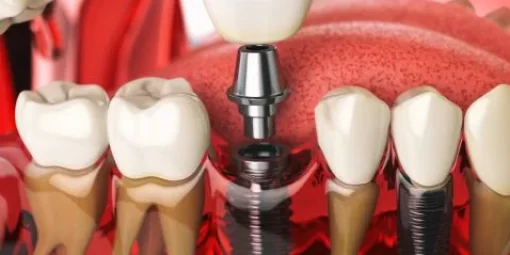
What is a Dental Bridge?
A dental bridge comprises crowns fixed on each side of the missing tooth or teeth, reinforcing the fake tooth or crown. Artificial tooth/teeth can be used as a dental bridge to close the gap. This artificial tooth in dental bridges can be made from several materials, including gold, but are commonly designed from porcelain to resemble your real teeth more closely.
Types of Dental Bridges
Typically, there are four common dental bridges used to substitute missing teeth. These bridges are used according to the patient’s requirements or preferences:
- Traditional dental bridge
This prosthesis consists of dental crowns that are fused to support teeth. They are commonly used when you have healthy teeth on either side of the gap.
- Cantilever dental bridge
This bridge is similar to traditional dental bridges but only one support tooth is needed to anchor the prosthesis in place. That means you need at least one healthy tooth adjacent to the gap to support this type of bridge.
- Maryland dental bridge
Maryland bridges use a frame of porcelain or metal attached to the backside of the supporting teeth. These bridges are helpful only when the lost tooth or teeth have a natural tooth on each side of the gap.
- Implant-supported dental bridge
Implants hold the bridge rather than crowns in this type of bridge. An implant is fixed for each missing tooth to hold the bridge in place.
Generally, all bridges are fixed on natural teeth, but dental implant bridges are a little different. However, all the bridges are equally reliable.
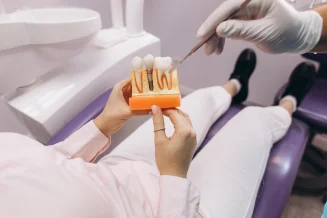
Traditional dental bridge
This prosthesis consists of dental crowns that are fused to support teeth. They are commonly used when you have healthy teeth on either side of the gap.
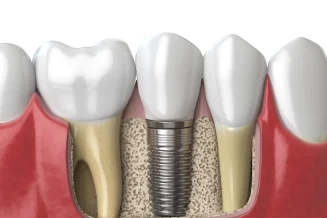
Cantilever dental bridge
This bridge is similar to traditional dental bridges but only one support tooth is needed to anchor the prosthesis in place. That means you need at least one healthy tooth adjacent to the gap to support this type of bridge.
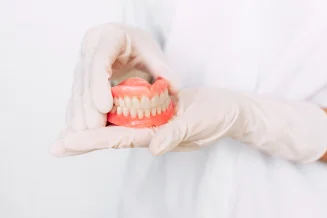
Maryland dental bridge
Maryland bridges use a frame of porcelain or metal attached to the backside of the supporting teeth. These bridges are helpful only when the lost tooth or teeth have a natural tooth on each side of the gap.
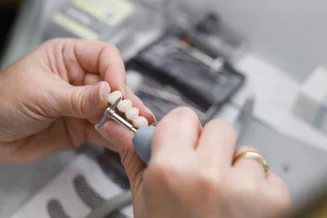
Implant-supported dental bridge
Implants hold the bridge rather than crowns in this type of bridge. An implant is fixed for each missing tooth to hold the bridge in place.
Generally, all bridges are fixed on natural teeth, but dental implant bridges are a little different. However, all the bridges are equally reliable.
Benefits of Dental Bridges
By fixing your smile, dental bridges can enhance your quality of life. Here are some more benefits of bridges:
- Provide comfort while eating
Dental bridges permanently eliminate discomfort while eating.
- Enhance speech
You can have trouble talking if you lose many teeth. Dental bridges resolve speech problems caused by tooth loss.
- Maintain facial structure
Jawbone degradation due to missing teeth can give your face that sunken-in look. Bridges stop further tooth loss and fill your face out.
- Avoid teeth shifting
A dental bridge is an excellent way to interrupt teeth from moving. Too much tooth movement can cause loose teeth, resulting in further tooth loss.
After dental bridge operations, many patients report feeling more self-assured. You should consider having a bridge installed if you have ever felt embarrassed by tooth loss or attempted to hide your smile.
Provide comfort while eating
Dental bridges permanently eliminate discomfort while eating.
Enhance speech
You can have trouble talking if you lose many teeth. Dental bridges resolve speech problems caused by tooth loss.
Maintain facial structure
Jawbone degradation due to missing teeth can give your face that sunken-in look. Bridges stop further tooth loss and fill your face out.
Avoid teeth shifting
A dental bridge is an excellent way to interrupt teeth from moving. Too much tooth movement can cause loose teeth, resulting in further tooth loss.
After dental bridge operations, many patients report feeling more self-assured. You should consider having a bridge installed if you have ever felt embarrassed by tooth loss or attempted to hide your smile.
How does a dental bridge work?
Dental bridges insert an artificial tooth into the gap and secure it on each side with crowns on neighboring natural teeth or dental implants. Whether anchored to teeth or implants, a bridge gives you a brand-new, durable chewing surface. You can opt for Dental Implants in Dallas for fixing bridges if you don’t have enough natural teeth.
Your remaining teeth are shielded from wear and tear as well as stress. Moreover, implant bridge dental safeguard your gums from being punctured or injured by food. An Implant dental bridge also lessens the pain of tooth loss. In short, bridges enhance functionality and protect gums and teeth.
Get properly functioning teeth with the best dental bridges
Our staff is eager to help you regain your smile and confidence. Affordable Implant Choice Center offers the latest facilities in a welcoming setting with highly skilled dentists to make your visit as comfortable as possible. Contact A Dentist for more information about our dental implant bridge and its procedures.
Frequently Asked Questions
Maintaining a bridge takes a bit of extra oral care. You must not only brush and floss around the bridge, but care is needed underneath the prosthesis to remove plaque accumulation that can irritate the gums and harm the implants.
Depending on your requirements, dental bridges can transplant one to four teeth. Yet, most people get one to two teeth replaced. You could have four teeth replaced by a dental bridge if you have healthy enough teeth to link with dental crowns.
It is simple to adjust a broad-width bridge with several implants if one or two have screws that protrude from the gums.
Yes, Loose or poorly-fitting implant bridges are the easiest to remove.
You should brush your dental bridges two to three times daily to keep them clean. This aids in cleaning the debris from the implants and the gum line. Brush your implants in a circular motion using a toothbrush with soft bristles for two minutes.
+1 469 638 3569
Emergency Call
